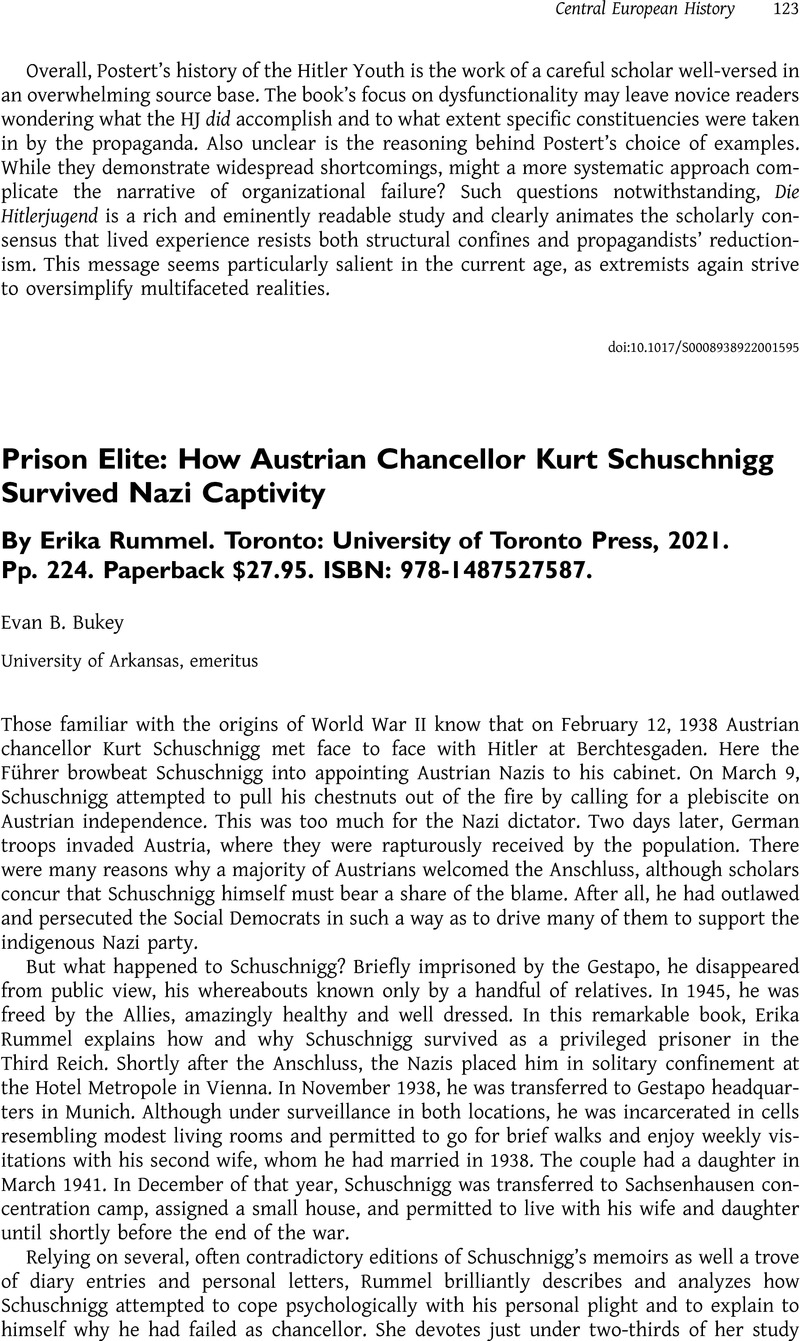No CrossRef data available.
Article contents
Prison Elite: How Austrian Chancellor Kurt Schuschnigg Survived Nazi Captivity By Erika Rummel. Toronto: University of Toronto Press, 2021. Pp. 224. Paperback $27.95. ISBN: 978-1487527587.
Review products
Prison Elite: How Austrian Chancellor Kurt Schuschnigg Survived Nazi Captivity By Erika Rummel. Toronto: University of Toronto Press, 2021. Pp. 224. Paperback $27.95. ISBN: 978-1487527587.
Published online by Cambridge University Press: 24 March 2023
Abstract
An abstract is not available for this content so a preview has been provided. Please use the Get access link above for information on how to access this content.

- Type
- Book Review
- Information
- Copyright
- Copyright © The Author(s), 2023. Published by Cambridge University Press on behalf of Central European History Society of the American Historical Association


